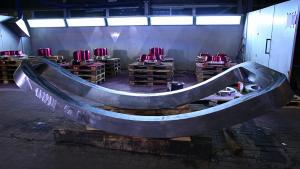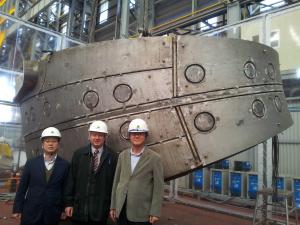In the early hours of Monday, 29 October 2012, the last of 633 massive stainless steel forgings for the ITER vacuum vessel left the KIND premises in rural Gummersbach, Germany. Their destination: Hyundai Heavy Industries in Ulsan, South Korea.
The forgings, made from highly refined F316L(N) IG steel, will be used for the construction of the first two sectors of the ITER vacuum vessel. The vacuum vessel is a hermetically-sealed steel container that contains the fusion plasma and acts as a first safety containment barrier. The manufacturing of the vessel is divided between Europe, which will supply seven sectors, and Korea, which will supply two sectors.
"We are very proud of being able to deliver these very special and tailor-made components for ITER on time," said Markus Kind, commercial managing director of the family-run company that is well-known for its experience in custom-made forgings (whether the 2,000 pieces manufactured for the Large Hadron Collider at CERN or the 15-tonne propeller shaft of a super yacht).
It took two full days to load the precious goods weighing 360 tonnes into 20 shipping containers.
The cargo Don Giovanni is now headed for Ulsan, South Korea, where the fabrication of the first two vacuum vessel sectors is in full swing.



